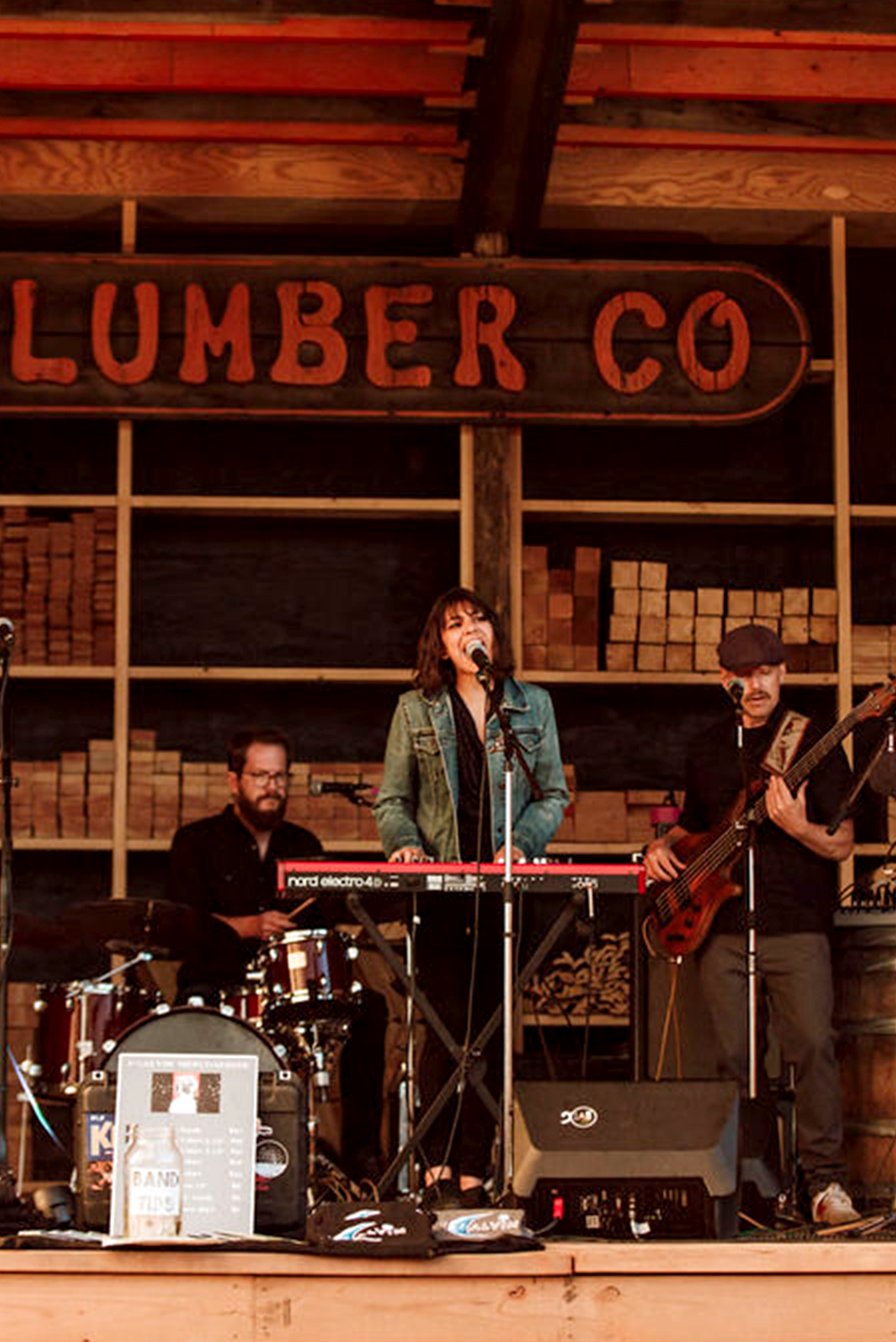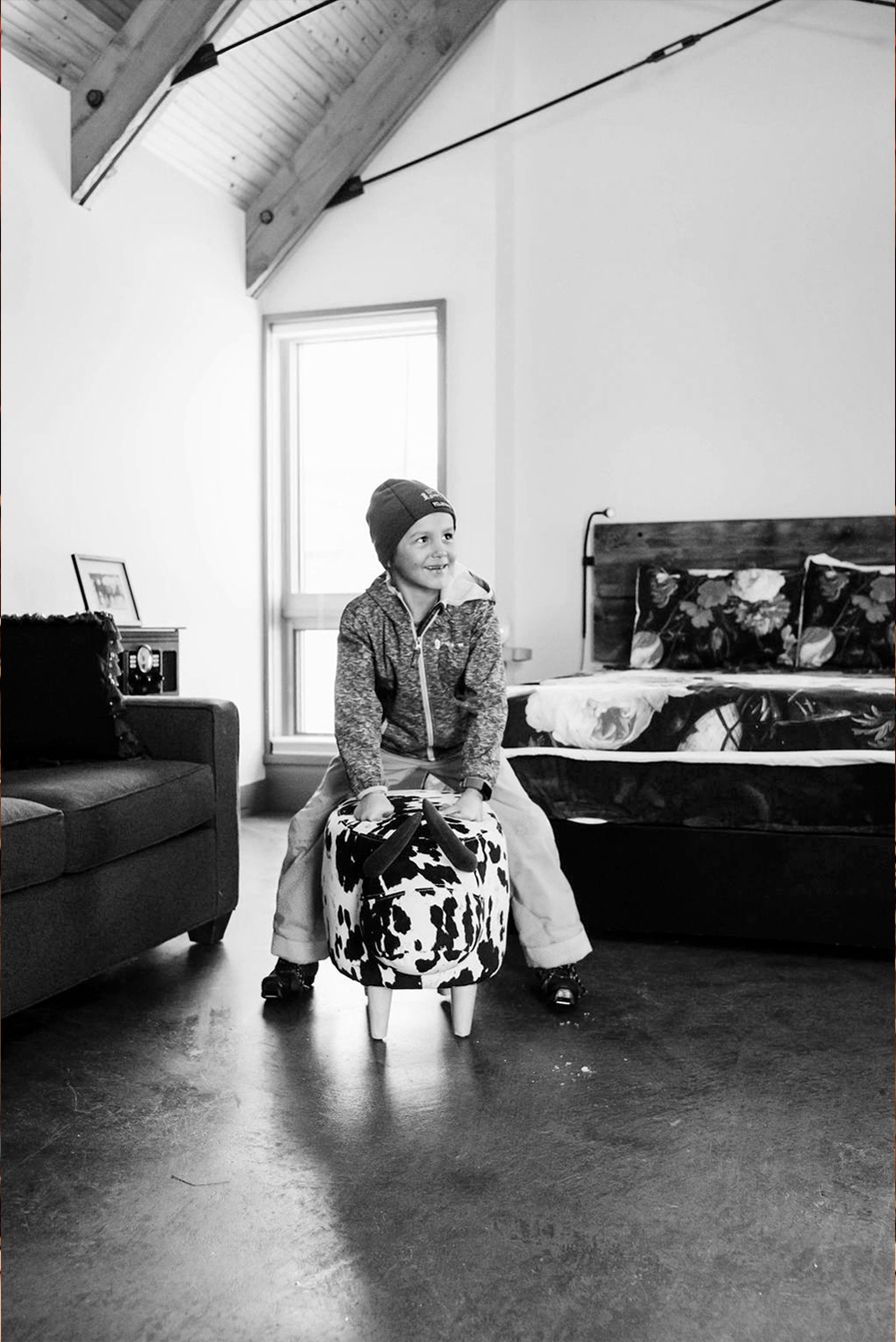The History of Freight & Leadville
Freight's Past
Over its more than century-long history the freight depot had served only two owners: the railroad, and since the 1920s, Smith Lumber Company. It had even been involved in a couple colorful incidents of historical intrigue involving conspiracy and murder on the railroad. Originally, the freight depot was the Front Range’s gateway to Leadville, bringing supplies to its residents and shipping out tons of silver ore from its booming mines. During the second half of the 20th Century, Smith Lumber used the building to store lumber that arrived by train until 1967, when the railroad closed and by truck until Smith’s closure in 2014. In 2016, the Andersons discovered the depot on a neighborhood walk with their grandchildren. The depot was abandoned, with a brokendown truck parked inside, but the structure had good bones and a glimmer of potential.
FREIGHT exists as a vessel for the community. We’re here to spark culture and encourage creativity. The space hosts weddings, meetings, pumpkin patches, craft fairs, corporate retreats, film festivals, photoshoots, prom, quinceañeras, lectures, concerts, and theatre performances. We want to be part of the tide that raises all ships. Water sings because it is moving. Together we create an inclusive space.
Freights Modern History
Founded in 2017 by Nanon and Dave Anderson, the idea for FREIGHT arose out of the incomparable potential of Leadville to serve as the backdrop for an authentic mountain-West experience. Nan and Dave discovered this vacant, classic freight depot and immediately knew that the barn-like structure, once renovated, would be a space unlike any other for bridging Colorado’s old world with its new. The freight depot is the perfect place for visitors to experience the town’s magic while comfortably enjoying a space from its past.
Even with its quaint allure as a true mountain town, its reasonable distance to Colorado’s Front Range and its close proximity to the bustling ski industry in adjacent Summit and Eagle Counties, Leadville has remained largely undiscovered. Building on the depots legacy, the Andersons will be developing 15 cabins on the adjacent land, under the name of “The Slumber Yard.” The cabins are available for rental with the depot or as stand alone nightly rentals. Freight houses can be terminal (serving many lines) or local. Local freight houses, often called “freight depots,” would be located close to the commercial center of town. In larger shipping communities, there might be separate freight houses for inbound and outbound goods. Freight houses were located alongside tracks, and were rectangular buildings with the long axis aligned parallel to the tracks. One-story freight houses were common, although two-story or combination one- and two-story buildings were found in larger cities. Numerous freight doors were generally spaced at fairly regular intervals across the buildings’ long elevations. Gable roofs were common. Freight houses were built of wood, brick, or stone.
A BRIEF HISTORY OF LEADVILLE
BY BEKAH GRIM
From the mid-sixteenth century, the Lake County area was inhabited by the Ute Nation called the Parianuche or “elk people.” In the summer, they hunted in the high country near the headwaters of the Arkansas River. In the winter, they traveled to lower elevations. The Utes continued their seasonal migrations until the 1860s, when Colorado’s Gold Rush began.
The Leadville area was first settled in April 1860, when prospector Abe Lee dunked his pan into the river and found placer gold. He exclaimed: “I’ve got California in this here pan!” and California Gulch was born. At mid-summer of 1860, nearly 5,000 fortune seekers flocked to the gulch to set up tents, build cabins, and test their luck with the land. Autumn arrived and over $2 million in gold had been mined from California Gulch.
By 1866, nearly all of Leadville’s placer gold deposits had been extracted. Most of the settlers packed up and left, leaving a ghost town. The remaining prospectors began examining the black sand that clogged their sluice boxes. At first the sand was a nuisance, but in 1877, the sand was found to hold 15 ounces of silver per ton. The word got out and Leadville resurrected into a silver boom town after teetering on the brink of abandonment. A treaty in 1868 pushed the Ute out of the Arkansas headwaters, creating an increase in mining and development for the region and dismantling a culture.
Enduring legends were created by fortunes dug out of the earth. Horace Tabor, also known as the Bonanza King of Leadville, owned the Matchless Mine, which pumped out silver at the rate of $80,000 per month during the roaring 1880s. It was the peak of silver boom and Leadville’s population of over 20,000 made it the second largest city in Colorado. Horace Tabor became Leadville’s first mayor and Silver King. His love life was famous, leaving his first wife Augusta for the illustrious charms of Baby Doe. He established the lavish Tabor Opera House in 1879, and hosted performances by Oscar Wilde, Houdini, and Buffalo Bill.
When Oscar Wilde arrived in Leadville in April 1882, Matchless Mine was in its glory. After giving a lecture, Wilde was taken to the mine in the middle of the night and given a tour of its splendor. He wore a slouch hat, corduroy coat, and tight trousers. The mine superintendent, Charles Pishon, found this outfit inadequate and gave him a rubber suit designed for a very tall man, which hung off his shoulders. Wilde descended into a dark, cramped shaft. In Wilde’s book Impressions of America, he recalls that he was lowered down “in a rickety bucket in which it was impossible to be graceful. Having got into the heart of the mountain, I had supper, the first course being whisky, the second whisky, and the third whisky.” He claimed the miner’s suits should “be made of purple satin with storks and fern embroidery.”
Leadville has had many nicknames like Oro City, the Spanish word for gold. It’s been called Cloud City for its 10,151 foot elevation and blanket effect of clouds. Slabtown because of the quickly built houses that sat on slabs. The rush of early mining camps started to be called Leadville after the valuable lead carbonate was found. Horace Tabor officially named the settlement Leadville in 1878, when the town wanted to get a post office.
In 1879, the Leadville City Directory census listed, among numerous other business enterprises, 10 dry goods stores, 4 churches, 4 banks, 31 restaurants, 120 saloons, 3 daily newspapers, 19 beer halls, 70 law firms to abate claim jumpers, 35 houses of prostitution, and 118 gambling houses. At the time silver was discovered in Oro Gulch, Leadville had three separate red light districts.
Leadville was a true Wild West town. In one saloon, there was a sign by the piano that read: “Please do not shoot the pianist. He is doing his best.” The frontier, experimental atmosphere of Leadville provided opportunities for the few women who ventured there. An 1880 census revealed that out of 15,185 people, only 3,794 were women. Many fell into prostitution as soiled doves, dance hall performers, or powerful madams in high end parlour houses. Other women became nurses, doctors, bookkeepers, prospectors, and clerks.
The wealth of Leadville led to many architectural feats. One example is the House with the Eye on 127 W. Fourth Street. It was built by a highly religious master carpenter Eugene Robitaille to appease his new bride. The house has a second story window shaped like an eye, and it was created as a reminder of the omnipresent eye of God.
The railroads played a vital role in the history of Leadville. In 1880, former president Ulysses S. Grant rode the inaugural train into Leadville on the Denver & Rio Grande Railroad. When the president arrived at 10 p.m., there was a two-mile long parade and bonfires lighting the way in the night. Another narrow-gauge railroad was developed, the Denver, South Park & Pacific. In 1887, the Colorado Midland Railway arrived in Leadville. By the 1890s, the Union Pacific Railway was in full operation. The trains bought the rich and famous in droves, including Doc Holliday, Wyatt Earp, and the Unsinkable Molly Brown, Titanic survivor. The saying goes: “Everyone came to Leadville.”
When the Sherman Silver Purchase Act was repealed in 1893, a silver panic hit Leadville. Tabor’s empire collapsed, Matchless Mine closed. About 90 percent of jobs went obsolete. The banks shuttered their windows. The silver boom days were over.
In the winter of 1895, the Leadville community rallied around an extravagant idea to save the town. They decided to throw a Crystal Carnival, which would have the star feature of an Ice Palace. Over 8,000 tons of ice were used to construct it. There was an ice skating rink in the center, a ballroom, café, gambling rooms, and it was lit by rainbow lights overhead. It was 58,000 square feet. Tourists traveled across the country to see the spectacle. Unusually warm spring temperatures melted the Ice Palace to a puddle in 1896.
In 1910, the value of zinc was discovered. Many mines had been throwing out zinc carbonate as waste, but increasing industrialization of World War I meant zinc and lead were back in high demand. Leadville entered a revitalization.
In 1929, Climax Mine reported its first profits from producing molybdenite ore, a steel hardener. For several decades, Climax Mine in Leadville reigned as the lead producer of molybdenum. For many years, the mine supplied three-fourths of the world's supply. In 1982, Climax closed and mining employment dropped from 3,180 to 200 by 1988. The closure sunk Leadville into an economic depression. Climax reopened in 2012.
In 1983, the annual Leadville 100 extreme endurance race began. The 100-mile race can be biked or run, and the course reaches elevations of up to 12,600 feet. The town doubles in size every August for the races. Crowds line Harrison Ave to watch the dramatic finish line.
Leadville has survived because of grit and ingenuity. It lies in the Rio Grande Rift between two mountain ranges, the Mosquito and Sawatch. The two highest peaks in Colorado dominate the view, Mount Elbert (14,440’) and Mount Massive (14,421’). The current population is 2,893. It’s an adventure town that celebrates rich history and rugged explorers.
Bibliography for a Short History of Leadville
- Blair, Edward. Leadville: Colorado’s Magic City. F. Pruett Books, 1980.
- Buys, Christian J. A Quick History of Leadville. Western Reflections Pub. Co., 2004.
- Buys, Christian J. Historic Leadville in Rare Photographs & Drawings. Western Reflections Pub. Co., 1997.
- Coquoz, Rene L. New Tales of Early Leadville. Eastwood Print. Co., 1964.
- Coquoz, Rene L. Tales of Early Leadville. Johnson Publishing Company, 1959.
- Coquoz, Rene L. The Leadville Story: Brief Story 1860-1960. Johnson Publishing Company, 1971.
- Griswold, Don L., and Jean Harvey Griswold. History of Leadville and Lake County, Colorado: from Mountain Solitude to Metropolis. Colorado Historical Society, 1996.
- “Lake County Public Library: Local History: Colorado Mountain History Collection.” Colorado Mountain History Collection – Local History – Lake County Public Library at Lake County Public Library, lakecountypubliclibrary.org/localhistory/cmhc.
- Larsh, Edward B., and Robert Nichols. Leadville, U.S.A.: an Intimate History of a Colorado Mining Town. Johnson Books, 1993.
- O’Connor, Richard. The Legend of Baby Doe; the Life and Times of the Silver Queen of the West. Putnam, 1974.
- Smith, Duane A. Horace Tabor: His Life and the Legend. University Press of Colorado, 1989.


